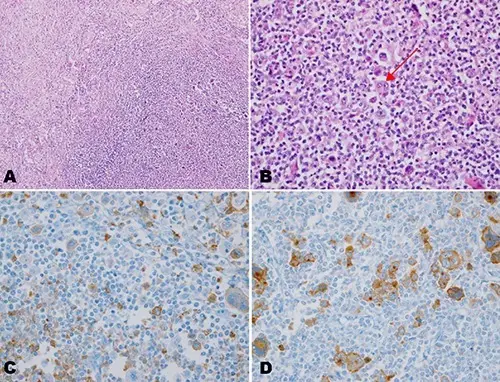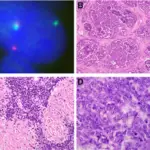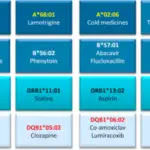Hodgkin disease is a type of lymphoma.
What is the Pathology of Hodgkin Disease?
The pathology of Hodgkin disease is:
–Etiology: The cause of Hodgkin disease is mutation in the DNA of a type of white blood cell called B lymphocytes.
–Genes involved: Somatically mutated clonal rearranged immunoglobulin genes, p53, CD95/Fas
–Pathogenesis: The sequence of events that lead to Hodgkin disease are: Hodgkin lymphoma starts when an abnormal change to the DNA of a white blood cell called a lymphocyte causes it to become a lymphoma cell that, if untreated, results in the uncontrolled growth of cancerous lymphocytes.
–Morphologic changes: The morphologic changes involved with Hodgkin disease are Reed-Sternberg cells.
How does Hodgkin Disease Present?
Patients with Hodgkin disease are typically males aged 15-35 years old. The symptoms, features, and clinical findings associated with Hodgkin disease include lymph node swelling, fatigue, fever, and night sweats.
How is Hodgkin Disease Diagnosed?
Hodgkin disease is diagnosed by X-ray, CT and positron emission tomography, lymph node biopsy.
How is Hodgkin Disease Treated?
Hodgkin disease is treated by chemotherapy alone, or chemotherapy followed by radiotherapy.
What is the Prognosis of Hodgkin Disease?
The prognosis of Hodgkin disease is good. If Hodgkin disease is found in its earliest stages, the 5-year survival rate is 90%. If Hodgkin disease has spread to different parts of the body, the 5-year survival rate is 80%.



